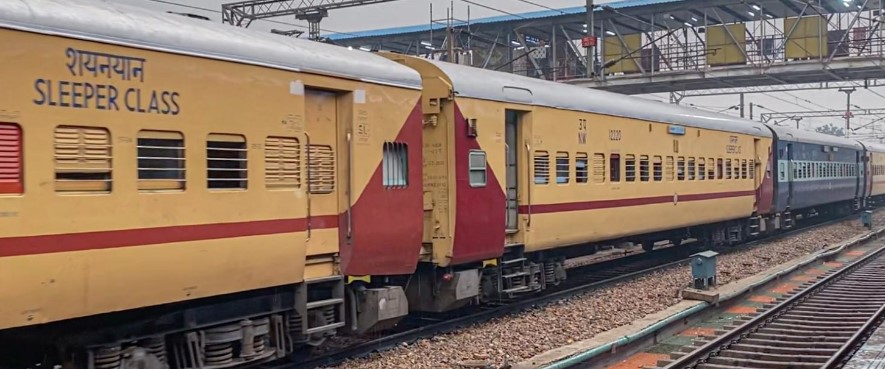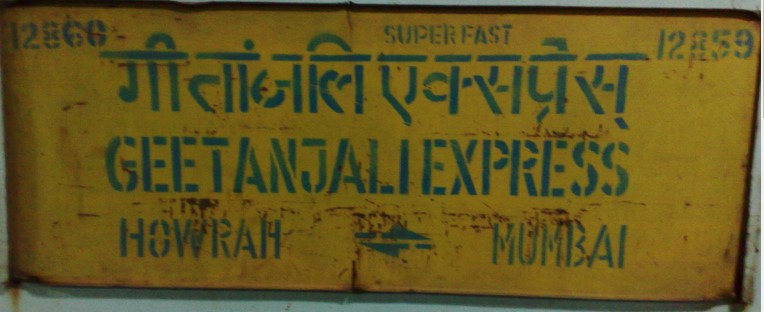
In 1973, at the age of 17, I enrolled at Government Medical College Nagpur as a medical student. During weekends, Suhas Jajoo and I frequently commuted between Wardha, where our parents lived, and Nagpur, where our college was located.
Our mode of travel? The third-class train compartments. Those berths were made of hard, bare wood, offering little comfort. Yet, we had no other option. Second class was financially out of reach, and first class was a luxury beyond our means.
So, we learned to endure the discomfort.
Fast forward to 1977. The Janta Party came to power, and Madhu Dandavate became the railway minister. Suhas and I had just passed our final MBBS exam. We were ready to start our internships in district hospitals and primary health centers.
A remarkable change unfolded.
Dandavate decided to add two inches of foam to the second-class berths. Suddenly, we found ourselves sitting and sleeping on soft, foamy berths.
The transformation was incredible. Our journeys became pleasant. We continued traveling in non-AC coaches, but even in those, despite the heat and humidity, the foam-covered berths made travel comfortable and relaxing.
I vividly recall his words in a newspaper interview: “What I want to do is not degrade the first class, but elevate the second class.”
The Gitanjali Express was the first to benefit from this change. On the day after Christmas in 1977, the train journeyed between Mumbai and Kolkata with these new, padded berths.
The Railway Board had wanted to call it the Eastern Express. But Dandavate, inspired by Rabindranath Tagore, named it the 𝗚𝗶𝘁𝗮𝗻𝗷𝗮𝗹𝗶 𝗘𝘅𝗽𝗿𝗲𝘀𝘀. Portraits of Tagore adorned the train’s interiors.

47 years have passed since then. Bombay has transformed into Mumbai, and Calcutta into Kolkata. Yet, amidst these changes, one constant remains—the Gitanjali Express still runs on the same route. It remains the most sought after train for travellers between Kolkata and Mumbai.
However, few are aware of its rich history.
In the past, the train stopped at Nagpur and Wardha. And it still does today. I can vividly recall those days. Despite being a long-distance service, we students couldn’t resist its allure. Although daily commuters and short-distance travellers were forbidden from entering the second-class compartment, that didn’t deter us. With youthful audacity, we would sneak in, eager to taste the forbidden fruit, to feel the plush comfort of those foam-covered berths!
This initiative spread quickly. By the late 1980s, when I rose to the position of reader from lecturer at Sevagram Medical College, every second-class compartment boasted these plush, foam-covered berths.
Now, we could undertake train journeys from Wardha to Bombay, Delhi, Calcutta and Madras in second class train compartments. The iconic holdalls, carrying sheets and pillows that had been our faithful companions on countless journeys, became obsolete, fading away like whispers in the wind!
But for Madhu Dandavate’s visionary initiative, we would have remained resigned to enduring those unforgiving wooden berths.
As physicians, we frequently console our patients with incurable diseases with the adage, “what can’t be cured, must be endured.” Without Dandavate, we, too, would have been compelled to seek solace in the same adage.
#indianrailways
Dr Samir Mewar
That was the train of my choice travelling between Wardha and my hometown, Dhanbad, via Howrah.. Very nostalgic
Superb blog SP Kalantri Sir 👌 (as always), enjoyed.
Gitanjali express was one of my favourite train in the childhood, due to its superfast status.
(Next was 39-down express 😁)
Sir, you post opened a flood gate of nostalgic memories.
I and many batchmates from Ngp used to do weekly commute between Sewagram and Ngp 1978 onwards.
While going to Nagpur sitting/standing on wooden bench or cushion didn’t matter for obvious reason. Even trains didn’t matter – any train going North would do.
I have even traveled in locomotives of both kinds, which was really exciting. Once I was a non-paying guest of a kind guard of a goods train. He even shared his tea with me.
While coming back, mostly on Monday, Sanjay Dachewar(God bless his soul), and I would take the 4.30am passenger train and promptly go to sleep if successful in grabbing upper births, and would only wake up after Paunar when the train track tilted for a 60° left turn. That tilt used to send message to the brain to come out of deep slumber – I guess, this can be an example of an acquired reflex.
Vow sir, Such well written post. Its so easy to corelate with us
You are right sir ,what we can not cure we should endure ,in this age where I crossed 63 years of age ..I feel many things beyond cure too we should learn to endure. You are a very keen observer of your surrounding since your early age ,very impressive sir❤️❤️
Sir,
Enjoyed reliving the charm of Nagpur-Wardha train trips in the 70s. Still remember as a kid going to Nagpur by the morning 630am train from Warud.
Geetanjali express had an ?unofficial stop at Wardha Main station…
My maiden voyage in AC was from Wardha east to Nagpur, when l boarded (just entered) with a push, because the train was moving & l couldn’t buy the ticket, the TC standing there pulled me in, & said अगले स्टेशन नागपुर पे उतर जाना, & l said that’s where l am going, it saved my money & gave me life time memory.
Wonderful writing again, Reminder of our Wardha – Nagpur -wardha train journey.. many times at weekends . Also initial train journey from Home town Varanasi to Itarsi then Itarsi to Wardha.
Later on Started Ganga Kaveri express biweekly . but stopping at Nagpur . Initial Hard seats, later on Foam seats… reservations was difficult to get .. you have made us to remember that old time experience
Even I had tasted the mettalic berths of the general compartment in olden days. Sometimes, we travelled standing, not been able to get the seat. Gone are the old days of struggle and now happily travel by Vande Bharat express. It feels like an aircraft.Thank you Sir for reminiscing the old memories.
I joined Sevagram as an MBBS student in Aug 73. Jalandhar City was my home town. I along with my batchmate Ravinder Ahluwalia used to travel from Sevagram to Jalandhar twice a year during vacation. Dr. ML Sharma, who was the Principal, used to sign our Railway student concession forms. From Jalandhar to Delhi, we travelled by Paschim Express and further to Wardha by GT express. We somehow used to manage reservations up to Delhi. Station master at Jalandhar used to send a telegram to Delhi for reservation by GT express.
It was so uncertain and we were always apprehensive about that. After getting down from Western express at Delhi, we used to run to find out whether our telegram ever reached the booking clerk at Delhi. Everything was opaque, and we had to believe the booking clerk, whatever he said.There was no means to confirm whether the clerk is right. Often the system worked, but I do remember times when I travelled standing in a second class compartment from Wardha to Delhi. The IT revolution has made reservations so transparent now.
And Dr. Kalantri, I would like to add that many coaches had wooden bars joined together to make a seat, not always a wooden plank.
Your write up on any subject is interesting and full of information.
Very informative post, Sir
The sound of Steam engine of Bhusaval passenger arriving at Warud station, & we sitting in our room in E block holding a cup of tea….what a nostalgic memory !
Great memories. We could endure so much! And still enjoy our train journeys
Very nicely written sir as always vividly described the railway transformation and I liked the innovative heading from hardwood to heaven
Beautiful writing. I love to read every post
Nostalgic memories sir. Travelling without reservations was common those days. And then slowly making some place near foot end of passengers. Even travelled on wooden plank of general compartment from wardha to Mumbai.
Well written and new information for us 🙏
Simple but fantastic write up
Dr Kalantri 👍🙏
I enjoyed the train ride into your younger years sir💖💖and I am sure there is a sequelae to follow…. The quantum leap from foam pads to vande bharats 😊💖
Thank you for sharing sir. I hardly travelled twice by Gitanjali to Mumbai due to day journey,mostly travelled by Calcutta mail or Howrah Exp.
Vidarbha Exp started later. Madhu Dandvate was really common man’s minister.
Read with details your succinct write up, nicely penned. Great efforts in remembering minute details .🙏
From wooden seats to luxury cabins
Not to miss we use to carry huge beddings with Dad
The steam engines , our clothes emmerse with essence of coke and what not
Ours is the only generation to witness both the era
Way to go……
In a nutshell shell capital markets are so charming when we see stock of Railways !
Beautiful write up ..the cushioned berths also caused the demise of the hold-all…
That mandatory canvas rolled up pack that was the must on long distance trains!!!
Now we travelled overnight just with an air pillow and a sheet on those journeys from Wardha to Bombay.
Beautiful! So nicely depicted.
Thank you sir!
Excellent coverage.
I think now you should write a novel or history of prominent personalities and you have many around you!